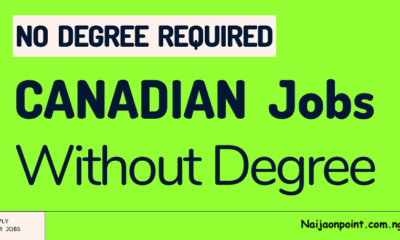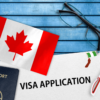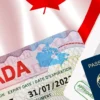Canada Jobs Online
How To Get Canadian Work Visa As A Software Engineer — Guide Step By Step
Canada Work Permit Software Developer: Canada is a world-famous tech hub, with huge tech companies like Shopify and major offices of tech titans like Microsoft, Amazon, and IBM. As a result, Canada has a plethora of job opportunities in the tech industry for skilled foreign workers.
Canada’s population is aging, and industries are expanding beyond the general population’s skill set. There are currently over a million job openings across Canada. As a result, Canada’s economy is dependent on skilled foreign workers coming over to fill the market’s massive vacancies.
You are one of the most in-demand workers in the Canadian job market as a software developer. This means you’ll have an easier time finding a lucrative job with plenty of benefits. Because you are in high demand, you may be able to obtain permanent residency in Canada much more easily or quickly than those in other occupations.
While there are many fantastic opportunities in Canada, you will most likely need to obtain a Canada work visa if you want to work there. So, how do you go about getting one? Is it even possible to obtain one? The following sections go over the requirements for a Canadian work visa and how to apply.
Canada Work Visa Eligibility Requirements
There are several things you should check before applying for a work visa in Canada. You must first check the eligibility requirements for a Canadian work visa and ensure that you meet them. If you do not meet the requirements, your Canada work permit application will be denied, and you will be unable to work in Canada.
Before applying for a Canadian work visa, three criteria must be met. There are requirements for you as an applicant, the employer for whom you intend to work, and the job offer you have received. An applicant for a work visa must meet the following requirements:
- Prove they will leave Canada upon the expiration of their work permit
- Have sufficient funds to provide for themselves and any dependants coming with them
- Have no criminal record and obey Canadian laws while in Canada
- Be in good enough health to not place pressure on the Canadian healthcare system
- Not be planning to work for a company or employer considered ineligible by the Canadian government
- Not plan to work for a company or employer that offers services such as erotic dance, escort services, erotic massage or striptease
- Give the Canadian immigration services any documents necessary to prove you can enter the country
- Be eligible for a Canadian Electronic Travel Authorization or travel in Canada without a visitor visa
- Meet all other requirements of your specific work permit
If you’re not sure if you meet all of these requirements, click the button below to speak with a Regulated Canadian Immigration Consultant (RCIC) about your qualifications and whether you qualify for a Canadian work visa.
If you meet all of your specific requirements, the next major step is to begin looking for software developer jobs in Canada. There are three important steps to taking when looking for work in Canada. These are their names:
Step 1: Do Your Research
Before you start applying for software developer jobs in Canada, make sure you’re making the most of the opportunities available to you. To increase your chances of landing the best job possible, you should try to build a professional network, ensure recruiters will assist you, and maintain your best online reputation.
Step 2: Choose Your Location
Different industries and demands exist in different provinces. As a result, finding work will be far easier in some provinces than in others. Aside from that, the cost of living varies by province.
As a result, their salary projections differ. The three best provinces to look for work as a software developer are Ontario, Quebec, and British Columbia. However, thousands of software developer jobs are available in multiple provinces across Canada. Here is a map that shows all of the most in-demand jobs in each province to help you decide which province is best for you:
Step 3: Localise Your Resume
A resume that is easy to read and contains all of your relevant information can make or break a potential employer’s decision. Make certain that your contact information is clear, up to date, and valid. Your resume should include a professional career summary that describes your most recent role, experience, and future goals. Another important consideration is all relevant work experience. Each previous occupation should be explained clearly and concisely. A great example of a well-structured resume can be found here:
Step 4: Apply for your job
After you’ve completed your research, selected your location, and prepared your resume, it’s time to apply for the job of your dreams. One of Canada’s massive job databases is a great place to find jobs in Canada. Among these are:
- Indeed Canada
- Workopolis
- Monster Canada
- eJobbo
- Canadian Job Bank
Check Your Job Offer
Congratulations! You’ve landed an opportunity to work in Canada! However, before you begin packing your belongings, there are a few things you should consider. The first is the job offer’s legitimacy. Unfortunately, the internet is vast, and there are many scammers out there looking to take advantage of those with the best of intentions. Certain checks must be performed to ensure that a Canadian job offer is genuine.
Once you’ve confirmed the legitimacy of the job offer, there are several requirements that must be met by both the job offer and the potential employer.
Your prospective employer should
- Get a positive Labour Market Impact Assessment (LMIA)
- This proves that your employer could not find a suitable candidate from the existing local labour force, meaning they had to look overseas.
- Offer and explain the nature of the job to the potential candidate.
Your job offer must:
- Be made by one employer
- Not be for an embassy or consulate in Canada
- Not be seasonal
- Be full time
- Be for at least 1 year
- Be fully paid
- Be written in a letter and include:
- Your start date
- The name and address of the employer
- The National Occupation Classification (NOC) Code related to the job (The NOC code for software developers is 2173)
- Your LMIA Number (if needed)
- Your pay and necessary deductions
- Your Job duties
- Your conditions of employment
If all of these requirements are fulfilled, it’s time to start your Canada work permit application.
Step 1: Choose your Work Permit
There are two kinds of Canadian work permits. These are determined by the type of work you intend to do, your qualifications, and your previous experience in Canada.
Types of Canadian Work Permits
Open Work Permit
This permit allows you to work for any employer in Canada and to change jobs as you please for a period of 1-2 years. These are only granted in limited circumstances, such as if you have recently graduated from a Canadian university and want to begin your career in Canada through the Post Graduate Work Permit program.
Employer-specific Work permit
As a software developer, this is most likely the work permit you will be able to obtain. This allows you to work in Canada, but only for the company from which you have a job offer and only for the duration of the job.
Step 2: Gather Your Documentation
To apply for a Canadian work permit, you must have all of the necessary documentation. Everything must be valid, up to date, and no documents must be missing. Failure to submit all required documents may cause your work permit to be delayed or even rejected. The following are the primary documents you will require as a software developer:
- Identification documents like a passport
- Proof of education such as a degree, certificate or diploma
- Proof of work experience such as:
- Copies of payslips
- Bank statements
- A reference letter that describes the scope and duration of your work
- Detailed job descriptions from employers
- The name, address, and phone number of previous employers
- Proof of funds such as:
- Income tax returns for the last two years
- Bank statements for the previous three months
- Proof of ownership of property, income, or investments
Dependent and Family information such as:
- Birth certificates and marriage certificates of all dependents
- The Family Information Form has been completed, signed, and dated.
- Proof of processing fee payment
- Proof of current legal status with your country of citizenship
- Job offer letter
- Clear police background check report
- Clear bill of health provided by a certified physician
- Several work permit forms:
- Application For Work Permit Made Outside of Canada (IMM 1295)
- Authority to Release Personal Information to a Designated Individual (IMM 5475)
- Document Checklist (IMM 5488)
- Family Information (IMM 5645)
- Schedule 1- Application for Temporary Resident Visa
- Statutory Declaration of Common-law Union (IMM 5409)
- Use of Representative (IMM 546)
Once you have completed and submitted all necessary documentation, you may move on to the third and final step.
Step 3: Submit Your Application
You can submit your application in writing via mail. Still, you can submit your application online to the Immigration, Refugees and Citizenship Canada website for a much faster processing time.
Opportunity is Calling
Now you have the tools to set forth on your journey to living and working in Canada! You have the skills but if you want to ensure you bring them across in the best way possible, click the button below to speak to an RCIC to ensure you don’t get tripped up at the last second.
FAQs
How much do Software developers make in Canada?
This is entirely dependent on your province, company, and position. The average entry-level software developer in Canada earns approximately $64 775 per year, while the average mid-level software developer earns approximately $77 445 per year. Senior developers can expect to earn up to $107,500 per year.
What is the average processing time for a Canadian work visa application?
This varies greatly depending on your country of origin and any process delays. A work permit can be processed in as little as four weeks, but it can also take up to nine months. Another reason to work with an RCIC is to help you navigate the process.
Is there a specific stream software developers can apply through to get a faster processing time?
Yes. You may be eligible for the Canada Global Talent Stream if you are classified as a highly skilled worker, which you are likely to be as a software developer. The Canada Global Talent Stream is intended to attract highly skilled foreign workers in specialized occupations, particularly those in the technology sector. For a complete breakdown of the Canada Global Talent Stream, see this article.















